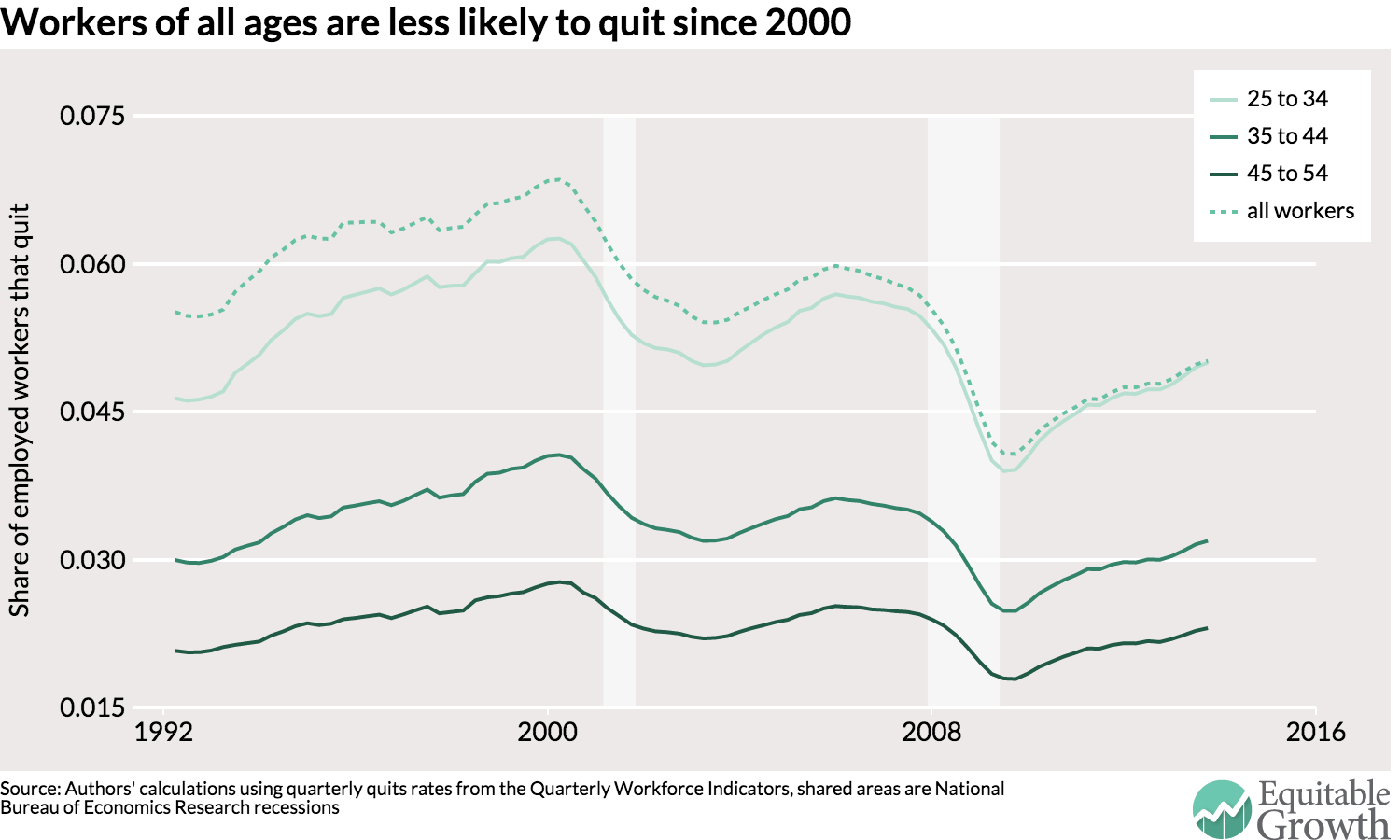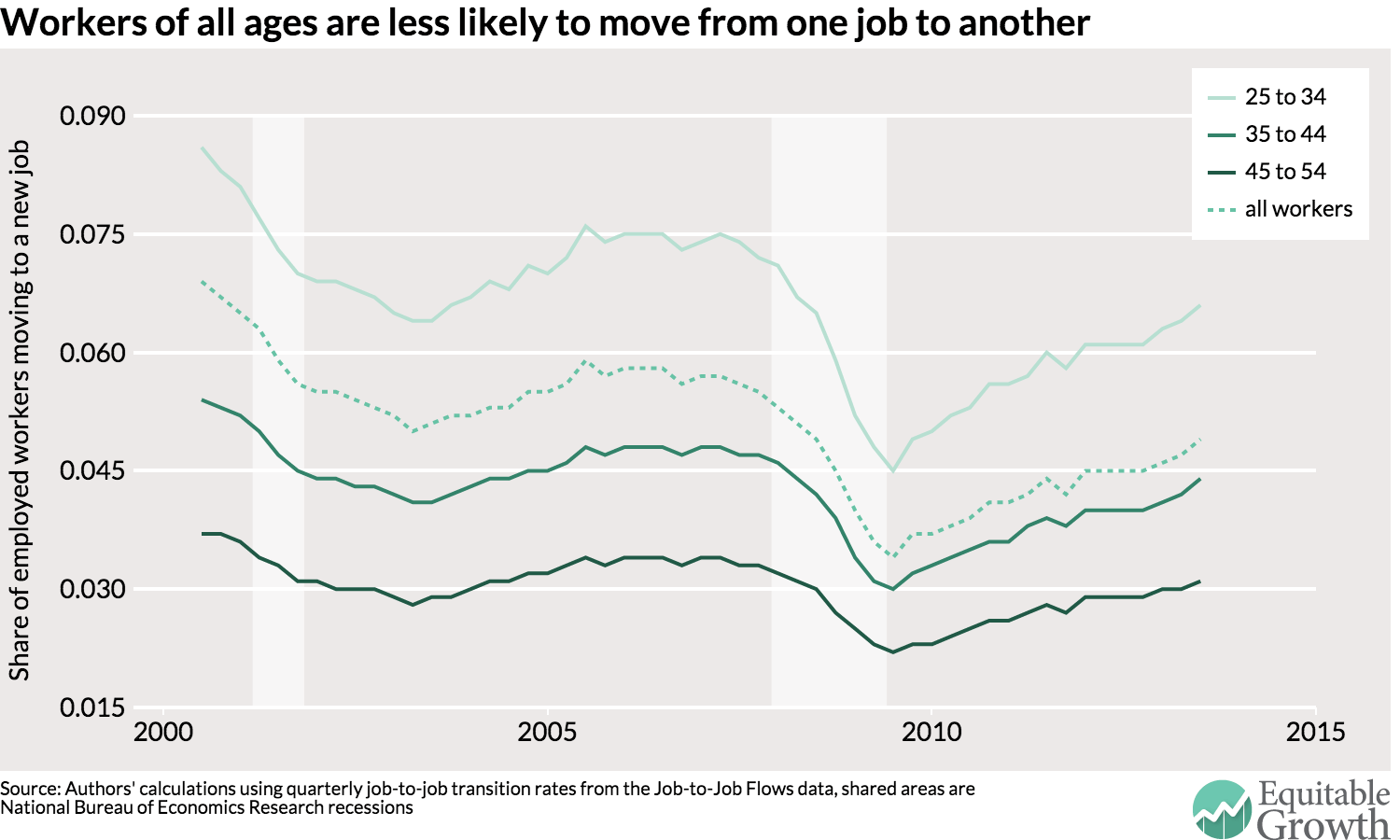Demographics don’t explain the decline in quitting
The decline in U.S. labor market mobility—meaning workers are less likely to move from one job to another—has major implications for wages and productivity. Yet the decline in job-to-job mobility and voluntary separations, also known as quits, started in 2000 around the same time that the Baby Boom generation started hitting retirement age.
This timing has sparked some concerns that a considerable amount of this decline in labor market mobility can be explained by the aging of workers. A look at data broken down by age, however, should assuage those concerns.
Very briefly, let’s explain why quitting is a good sign for the labor market. When the labor market is healthy, workers are more likely to voluntarily leave their jobs, as there are more opportunities at other employers. These options allow workers to move to new jobs that are better matches, boosting wages, productivity, and workers’ bargaining power. Conversely, declining rates of workers quitting and moving from job to job are troubling signs for a labor market.
The most commonly cited data when it comes to quitting is the quits rate from the Bureau of Labor Statistics’ Job Openings and Labor Turnover Survey, also known as JOLTS. Yet this survey, while quite valuable, only goes back to the end of 2000. And since it’s a survey of employers, it doesn’t allow us to look at what’s happening for different kinds of workers.
In our case, we’d like to see how the quits rate and the job-switching rate have changed for different age groups. If these rates have declined for workers across age groups, it weakens the case that demographics are a major force pushing down labor market mobility.
Luckily, we do have access to datasets that let us see the trends in quitting and job-switching by age. These sources are the Quarterly Workforce Indicators, which lets us look at the rate of quitting going back to 1992, and the Job-to-Job Flows dataset, which lets us see the rate of job-switching since late 2000. Here’s what those data tell us:


The quits rate and the job-switching rate are clearly on the decline for all age groups. Younger workers are more likely to quit their jobs and move to another one, but their rates have declined since 2000, meaning that demographics can’t explain this trend. In fact, it’s striking how much the overall quits rate from the QWI tracks the quits rate for workers 25 to 34 years old, and how the overall employment-to-employment switching rate tracks the same rate for workers ages 35 to 44.
Demographics cannot fully explain the major decline in quitting and job-to-job transitions over the past 15 years. We should focus our efforts on other potential causes and policies that could remedy these trends.
